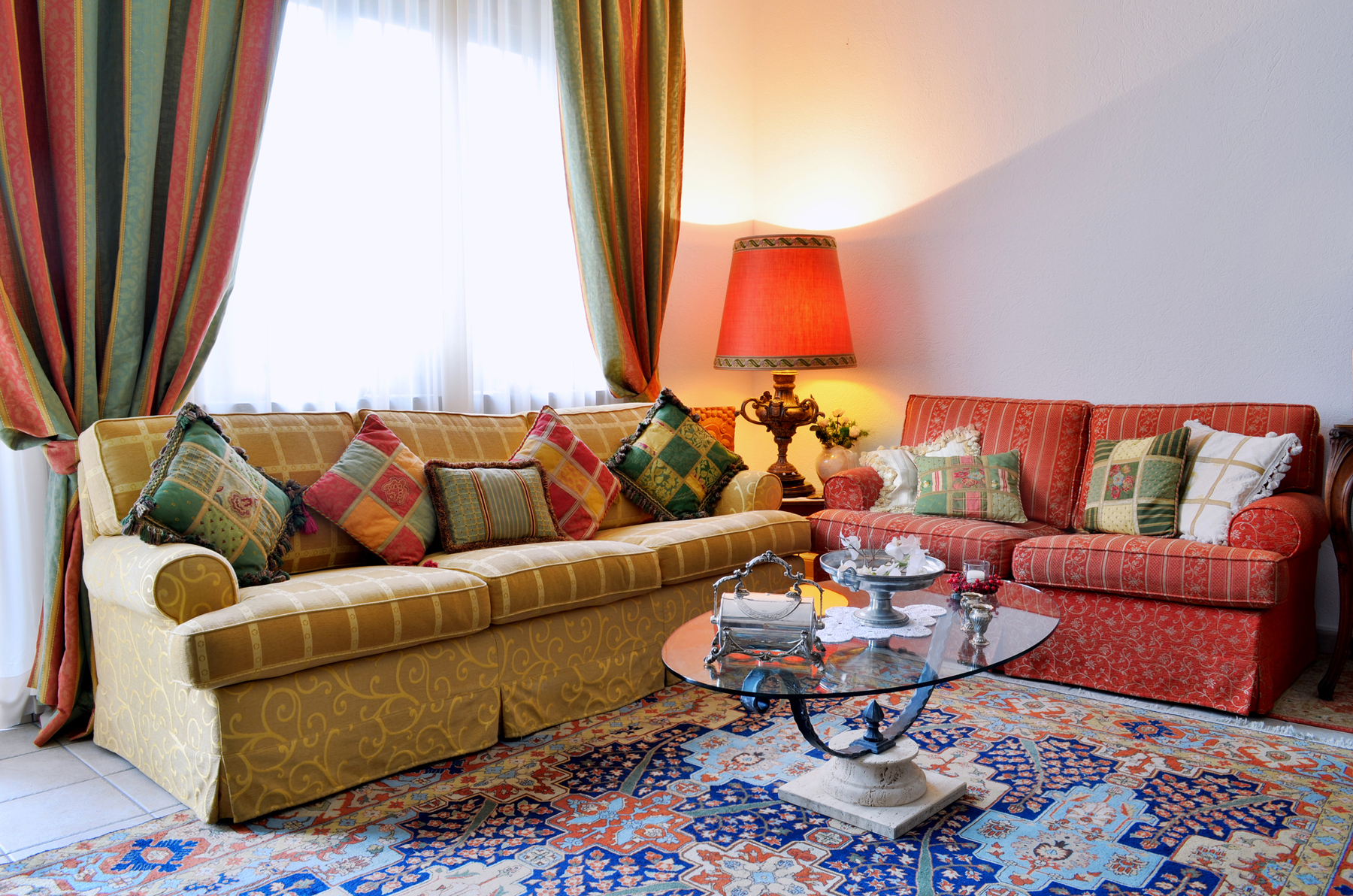
“The first rule of decoration is that you can break almost all the other rules.” – Billy Baldwin
Excuse me Billy but it depends which rules you want to break! If you want to take Billy’s advice and eschew decorating rules, make sure you are throwing out the arbitrary ones such as “don’t mix warm color with cool” or “use light colors in small spaces” I say have at it. Break away! Get wild and crazy!
There is, however, a class of rules that can bend only so far before they snap. These are design principles and they are based more on geometry than on opinion.
When these “rules” are ignored, you will most likely feel that there is something amiss with a space. You might not be able to verbalize just what the problem is, but it is almost certain that a rule has been broken.
The basic design principles are balance, focus, harmony, proportion and rhythm.
Balance: You are more likely to feel if a room is unbalanced than see it. Balance simply refers to the visual equilibrium of a room that is achieved by how objects are placed according to visual weight.
Shape, color and texture all help to determine their visual weight.
Focus: This refers to the direction the eye travels and remains as it first enters a space. More than one focal point in a room makes it quite uncomfortable as there is no place for the eye to rest.
Harmony: This is achieved when the elements of a room work together to form a visually pleasing combination. Harmony in interior design is achieved by having a connection. This unity can be defined as a design thread that tells a story from one element to another.
Proportion: Ah, Proportion and his best friend Scale . This is something the real estate agent fails to mention when showing you a home with a two-story great room. Technically, proportion refers to how the elements within an object relate to the object as a whole while scale relates to the size of an object compared to the space in which it is located.
Rhythm: The rhythm of a room controls the visual flow around a room. Rhythm allows the eyes to move around from one object to another and creates a harmonious atmosphere in a room
A well designed home that incorporates these elements is not unlike the paints that an artist uses in the creation of a breathtaking work of art … each color and brushstroke plays off another color within the guidelines of design principle. The result is a warm, inviting space for living.


